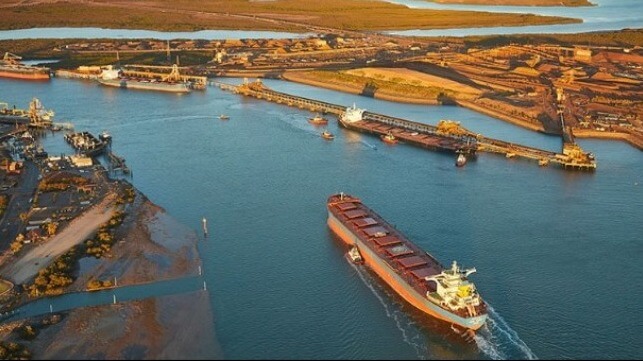Danish Ship Finance Examines a Future With Less Shipping

In a new long-term outlook released Wednesday, prominent shipping lender Danish Ship Finance has raised one of the toughest considerations of the green transition: If clean technologies and net-zero targets prompt customers to cut back, there will be fewer ships - and fewer exhaust stacks. According to the financier, less business might be the biggest contributor to shipping's decarbonization.
Shipping carries 90 percent of all traded goods, and it draws its business from virtually every sector of the economy, primarily through corporate customers with large volumes of cargo. Some of the biggest customers have announced plans to cut their emissions to net zero by 2040, a decade ahead of the Paris Agreement goal. When that happens, "cargo types, trading patterns and parcel sizes will likely change when these corporate players adapt their behavior to reach their targets," predicts Danish Ship Finance. These behavioral changes could include higher energy efficiency, less manufacturing waste, shifting to new energy sources and relocating industrial activity.
As an example, the report points to potential changes in the steelmaking sector, which accounts for 7-9 percent of all global greenhouse gas emissions. Making steel requires moving iron ore and coking coal, in vast quantity. Together, these two commodities account for a third of all dry bulk volumes (28 percent and 5 percent, respectively). But several high-end steelmakers are now experimenting with hydrogen instead of coke in the smelting process. If green hydrogen eats into the market share of coke, dry bulk volumes will fall. If the new technology allows the steelmaker to locate next to an iron ore mine - for example, in Western Australia, where solar potential, wind resources and iron ore coexist in the same place - there would be no need for seaborne transport of the ingredients. This scenario would take decades to develop, but it is not entirely hypothetical: Australian iron ore giant Fortescue is investing in green steelmaking technology, and one of the world's biggest green hydrogen projects is planned just a few hundred miles from Fortescue's mines in the Pilbara region.
The overall trend towards higher energy efficiency in everyday life - higher fuel economy, better insulation, less energy-intensive appliances - could also have an impact on demand for energy commodities. Less dramatic but still impactful, a general shift to a circular economy could reduce the amount of new material shipped on transoceanic routes, according to Danish Ship Finance, while boosting short-haul transport of waste materials for reuse.
Near-term growth
This vision of lower total cargo volume would affect shipping in the long term, but in the near term, total volumes continue to rise. Ton-mile transport has risen by more than 40 percent over the last 15 years, and is still going up. To cut back on emissions while growing, shipping will need better energy efficiency - and the cheap fixes (like slow steaming) have already been done. Shipowners who operate their own fleet and keep their ships for a long time may be best poised to take advantage of the new environment, according to Danish Ship Finance, since they will be able to reap the long-term benefits of high up-front capex in vessel efficiency improvements.
As for green fuels, the financier is not optimistic in the short term, unless the shipowner has a long-term charter and a long-term fuel supply contract. "There is currently no clear pathway for sustainable fuels to be introduced in the shipping industry," the outlook warned. "The ability to burn sustainable fuels that are not yet available seems a problematic investment prospect in the short term, since it may yield a negative return on invested equity until the markets start rewarding such capabilities."
